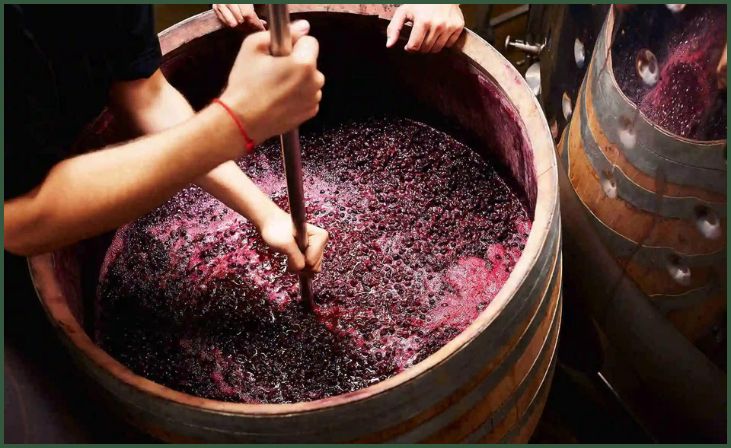How Does Alcohol Fermentation Work – Welcome to a detailed exploration of the intricate process of alcohol fermentation. In the following article, we will take a deep dive into the inner workings of this captivating biological and chemical process. Our aim is to illuminate the path through which your beloved alcoholic beverages are born. Whether you’re a budding homebrewer looking to perfect your craft, a science enthusiast keen on understanding the wonders of fermentation, or simply someone with a curious mind, you’ve arrived at the perfect destination. Join us on this captivating journey as we unravel the mystery behind the question, “How Does Alcohol Fermentation Work?”
In this journey, we will uncover the secrets held by yeast, the mighty microorganism that orchestrates this remarkable transformation. You’ll gain insight into how sugars are transformed into the delightful elixir we know as alcohol, and how temperature plays a pivotal role in the process. We’ll explore the importance of creating anaerobic conditions for fermentation, and how different types of vessels can influence the final product’s taste and aroma. We’ll also touch upon the art of distillation, a technique used to further elevate alcohol content, and how aging imparts distinct flavors to the beverages we love.
Table of Contents
ToggleHow Does Alcohol Fermentation Work?
In this section, we will delve deep into the intricate process of alcohol fermentation and dissect its key components, each playing a vital role in the transformation of simple sugars into the delightful alcoholic concoctions we enjoy.
Yeast: The Mighty Microorganism

Yeast stands as the unsung hero of alcohol fermentation. These minuscule microorganisms are the masterminds behind the magic, responsible for the conversion of sugars into the beloved elixir of life – alcohol. It’s essential to grasp that yeast is the heartbeat of brewing beer, crafting wine, and producing spirits.
Also Read:- Marinating Meat with Ferments
Yeast’s Sugar Feast
Picture yeast as a voracious guest at a grand banquet, hungrily consuming sugars with unparalleled enthusiasm. The enchanting process commences when yeast encounters sugars such as glucose or fructose. These sugars serve as the primary source of fuel for yeast during fermentation, setting the stage for the grand transformation.
Ethanol Production
As yeast indulges in its sugar feast, it generously bestows upon us the cherished gift of ethanol, or more simply put, alcohol. Alongside this alcoholic creation, carbon dioxide emerges as a byproduct. This is the juncture where the enchantment of alcohol production truly begins. As time progresses, the concentration of alcohol steadily rises, and the liquid transforms into the spirited libation we adore.
Temperature Matters

Controlling the temperature during fermentation is of paramount importance. Different strains of yeast exhibit their optimal performance at varying temperature ranges, each contributing distinct nuances to the final product. The temperature at which fermentation occurs can significantly influence the flavor and alcohol content of the finished concoction.
Don't just scroll, subscribe!
BuzzTrail's unique web-stories are the cure for boredom you've been waiting for.
The Importance of Anaerobic Conditions
Crucially, alcohol fermentation unfolds under anaerobic conditions, signifying the absence of oxygen. This characteristic is fundamental to the process and distinguishes it from the oxygen-dependent aerobic respiration.
Fermentation Vessels
The vessel in which fermentation takes place adds yet another layer of complexity to the process. Whether it’s the traditional wooden barrels reminiscent of bygone eras or the modern stainless steel tanks, the choice of vessel significantly impacts the taste and aroma of the final product. The art of selection lies in the hands of the brewer, influencing the outcome in every sip.
Distillation: Elevating Alcohol Content
In certain cases, a refined technique known as distillation is employed to further elevate the alcohol content of the liquid. This step is most commonly associated with the production of spirits like whiskey, vodka, and rum. Distillation plays a pivotal role in intensifying the potency of these beloved libations.
Aging and Flavor Development
Many alcohol products undergo a transformative journey through aging. It is during this phase that wooden casks and barrels come into play, infusing the liquid with a bouquet of unique characteristics. The aging process is an art form that bestows depth and complexity to the final product, enriching the experience for the connoisseur.
The Role of Microorganisms

Beyond yeast, a cast of other microorganisms may also contribute to the fermentation process. Understanding their roles and the intricate interplay between them is essential for crafting distinct and nuanced beverages. These microorganisms add layers of complexity and character to the final product, leaving a signature mark on each sip.
As we navigate the rich tapestry of alcohol fermentation, we unveil the symphony of elements that orchestrate the creation of our beloved beverages. Each component is a note in this melodic journey, producing harmonious outcomes that tantalize our senses and enrich our lives.
Also Read:- Tips for Preventing Mold in your Ferments
Conclusion
In conclusion, understanding how alcohol fermentation works is a fascinating journey into the realms of biology, chemistry, and craftsmanship. Whether you’re producing your own alcoholic beverages or simply curious about the process, this knowledge enhances your appreciation of the drinks you enjoy. Embrace the art and science of alcohol fermentation, and perhaps even try your hand at crafting your own concoctions. Cheers to the wonders of fermentation!
FAQs
What is the ideal temperature for yeast during fermentation?
What is the ideal temperature for yeast during fermentation?
The ideal temperature can vary depending on the type of yeast and the desired flavor profile. However, a range of 65-75°F (18-24°C) is suitable for most beer and wine fermentations.
Can you explain the difference between brewing beer and making wine in terms of fermentation?
Can you explain the difference between brewing beer and making wine in terms of fermentation?
Brewing beer primarily involves malted barley and hops, while making wine relies on grapes or other fruits. The fermentation process is similar, but the ingredients and flavors are distinct.

